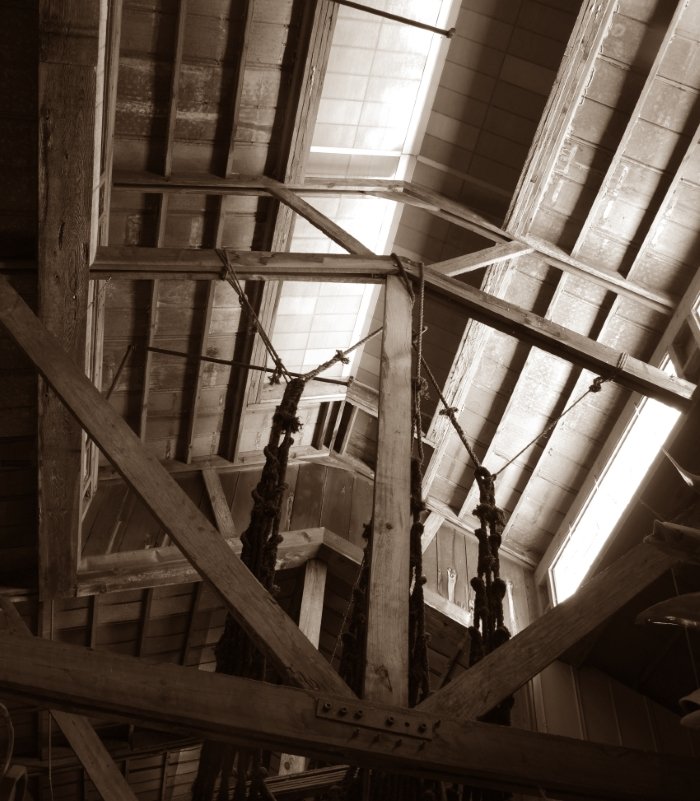Constructing Noah’s Ark – Re-Examination Of The Original Biblical Wording
Daniel Eltzroth - AncientPages.com - Has the familiar story of Noah and the Ark, in more modern times, been accurately translated? A reexamination of the original wording can provide new insights into what was being conveyed to ancient listeners, as what was once part of a lengthy oral tradition.
For the description of how the Ark was to be built, the wording is contained in three verses of Genesis, at Chapter 6, verses 14 through 16.
Image credit & copyright: Daniel Eltzroth
In those three ‘construction’ verses, which were part of the lengthier description of God speaking to Noah, are step-by-step directions provided to Noah. After the failings of humankind are articulated, the segment starts with: “For this reason, you yourself will be building an Ark.” Then comes the bottom to top description of the building of the vessel, as in a barn-raising manner, one in common use for the time.
Timbers Of Wood
The instructions then proceed: “Begin with squared timbers of wood.” Often described as “gopher wood,” the Hebrew term gofer, accompanied by the word ets (wood) was in the King James Version’s 17th century English transliterated as written, without any supplementing definition. Pronounced originally with a soft “g” (zhoe fair or joe fair) gofer has usually been termed as a type of tree, such as cypress. In the original Greek Septuagint version, the same term was tetragonos, meaning four-cornered, or square-cut, a long-used method of hewing timber. This for ancient audiences described a well-known labor-intensive type of shaping wood, one appropriate for more durable projects.
Inside Beams
Within the same verse, what followed was: “Bind together beams to be aligned within the Ark.” Over time, the wording, through varying translations, had become altered into a now more common phrasing of “rooms.” However, the original wording, following the logical wood-shaping, reflected the laying of an inner foundational type of support.
The Hebrew term qinnim, initially meaning reeds or stalks, depicted woven papyrus strands that were used to create inner types of struts and rafters for both large watercraft and land structures of the times. As part of the sequential construction process, the wood and the beams were laid out on the ground during fabrication. The term rooms is less applicable here at this initial stage, as normally rooms are added in a structure after the internal floors are built, and here, in this segment, the floors come to be mentioned two verses later. The word beams restores the logic of the ancient sequence.
Sealant
Concluding that verse, comes: “And seal with securing veneer what will be the inside and out.” More expensive types of imported lacquers and veneers, of wood origin, were used for expansive projects of the time, to provide the best types of waterproofing. In Hebrew, two contrasting words appear, first kaphar (the securing/preserving property of veneer, also applying to atonement) and kopher (the sealant itself). Phonetically, they also rhymed with the earlier wood term gofer, adding to the lyrical, as well as a subtle and sacred subtext of the original wording.
The Dimensions
In the next verse, the second of the three verses (and each consisting of three sections), the Ark was specified in ancient cubits to be 300 cubits in length, 50 cubits in width, and 30 cubits in height. Those were easily memorable large, and what we think of as rounded, numerals of the time. Modern translations, whether into meters or feet, tend to have lost that roundedness, becoming less impressive in the process. For example, a common Ark designation now is 475 feet in length, with proportionately smaller, and non-rounded width and height.
“Finally, a Key to Understanding!” The Biblical chronicle of the Great Flood, the epic of Noah and the Ark in Genesis of the Old Testament, was originally a spoken work, structured to be performed in recitation. The presentation of long ago was lyrical, with segments in rhyme, imparting its message in readily understood simplicity.
There have recently arisen questions: What of its meaning has been lost? Was there more, which those of the ancient world could readily understand? What was the actual ancient message? To address that, the entire episode is now freshly explained, adjoined by an easily flowing translation, based entirely upon the age-old scriptural wording. Its full meaning: One of destruction and preservation, of catastrophe and rebuilding, of loss and then renewal, again is fully realized. Read more:
Additionally, the original dimensions reflected knowledge of the ancient “Golden Mean” concept, one of what constituted ‘ideal’ measurements. Our ascending numbers of 1, 3, 5, 8 reflect those proportions, each being essentially 1.6 times larger than the one previous, also now called the Fibonacci Sequence. Massive projects, such as the Egyptian Great Pyramid (its base to height ratio) and the Greek Parthenon, with base/column spacing, each embodied aspects of the 1 to 1.6 proportion. As the common ancient cubit average (around 19 inches) is 1.6 times the length of the modern twelve-inch foot, it can provide for an easy modern conversion.
See also:
Mystery Of The Lost Biblical Kadesh Where Moses Was Punished By God
Blood Of St. Januarius – One Of The Most Remarkable Christian Relics
Mesha Stele: One Of The Most Valuable Biblical Artifacts
Taking the Ark’s 300-50-30 measures, one can simply move one numeral up the 3-5-8 sequence, from 3-5-3 to 5-8-5, and now the cubits become 500-80-50 feet, which retains the rounded numbers and allow for an accurate modern conceptualization. As now, ancient orators expressed memorable numbers to their listeners, and by returning to those, the wordings of antiquity can be recaptured.
In this phrasing, the full verse is: “You shall then lay out the Ark to this: 500 feet the length of the Ark, 80 feet its width, 50 feet to be its height.” That ending of “to be” regarding its height helped to indicate that the height was to come last, when the sides are lifted.
The Raising Of The Sides
In the third of the three construction verses, it is here that the Ark’s final coming-into-shape is illustrated, by alluding to the then-common barn-raising concept. In translation: “To join together the Ark: You will raise it, and closely connect it at its crowning point.” When phrased in this manner, the uplifting of the sides (typically by ropes and assists from domesticated livestock), the completion of the Ark can, as in antiquity, be more readily envisioned. An orator could have characterized this visually through supplementary arm movements, to highlight the uplifting process.
Image credit & copyright: Daniel Eltzroth
This third verse ends with instruction on adding a door, and internally adding three floors, or decks. Specifically: “Also, a door you shall install in the side of the Ark, and with a ground floor, a second floor, and a third, you shall make it ready.” This reinforces the three-fold narrative underpinnings of each verse. Also, as in construction projects today, the framing comes first, with adherence to specific outer dimensions, and finishes with the inner particulars.
The concluding phrasing of the third verse, “You shall make it ready,” mirrors the opening of the first, earlier verse, which began with “You yourself will be building an Ark,” a style of mirroring prevalent throughout the entire Ark narrative.
With the passage of time, much can be “lost in translation.” Through modern methodology, what can be regained can provide much more insight into what the ancients were hearing, and in a manner replicating the then-common means of group communication, as with sermons today, the manner of recitation by orators to widely disbursed groups.
This information is expressed in greater detail, along with many other aspects of the Noah’s Ark narrative, in my book entitled: Deluge: The Great Flood of the Bible.
My earlier book is: The Gospel of Thomas: A New Translation for Today’s World.
Each is available on Amazon.
Written by – Daniel Eltzroth AncientPages.com Contributor
Copyright © AncientPages.com All rights reserved. This material may not be published, broadcast, rewritten or redistributed in whole or part without the express written permission of AncientPages.com
More From Ancient Pages
-
 Unique Wooden Stave Churches Were Built Without Nails – Remarkable Technology Helped Them Survive
Featured Stories | Nov 15, 2022
Unique Wooden Stave Churches Were Built Without Nails – Remarkable Technology Helped Them Survive
Featured Stories | Nov 15, 2022 -
 More Than 60,000 Ancient Maya Structures Obscured By Inaccessible Forest Revealed By LIDAR
Archaeology | Sep 29, 2018
More Than 60,000 Ancient Maya Structures Obscured By Inaccessible Forest Revealed By LIDAR
Archaeology | Sep 29, 2018 -
 Two Men Sentenced To Prison For Vandalism Of 4,000-Year-Old Petroglyphs In Nevada
Archaeology | Nov 12, 2022
Two Men Sentenced To Prison For Vandalism Of 4,000-Year-Old Petroglyphs In Nevada
Archaeology | Nov 12, 2022 -
 Large Statue Of Ancient Guardian Discovered At Angkor Wat
Archaeology | Aug 7, 2017
Large Statue Of Ancient Guardian Discovered At Angkor Wat
Archaeology | Aug 7, 2017 -
 Unusual Discovery Of A Bronze Age Axe In Norway – Is An Unknown 3,000-Year-Old Shipwreck Nearby?
Archaeology | Jul 19, 2024
Unusual Discovery Of A Bronze Age Axe In Norway – Is An Unknown 3,000-Year-Old Shipwreck Nearby?
Archaeology | Jul 19, 2024 -
 On This Day In History: Charlemagne King Of The Franks And Emperor Of The Holy Roman Empire Born – On April 2, 742
News | Apr 2, 2017
On This Day In History: Charlemagne King Of The Franks And Emperor Of The Holy Roman Empire Born – On April 2, 742
News | Apr 2, 2017 -
 Mysterious Ancient Maya ‘Star War’ Glyph And Its Possible Connection To Venus
Archaeoastronomy | Feb 20, 2019
Mysterious Ancient Maya ‘Star War’ Glyph And Its Possible Connection To Venus
Archaeoastronomy | Feb 20, 2019 -
 DNA Research Shows Ancient Britain Was More Diverse Than We Imagined
Featured Stories | Nov 4, 2022
DNA Research Shows Ancient Britain Was More Diverse Than We Imagined
Featured Stories | Nov 4, 2022 -
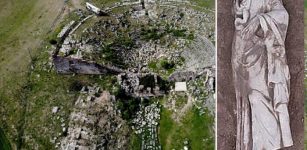 Statue Of Greek Health Goddess Hygieia – Unearthed
Archaeology | Aug 24, 2021
Statue Of Greek Health Goddess Hygieia – Unearthed
Archaeology | Aug 24, 2021 -
 America’s Native Population Arises From A Single Wave Of Asian Migration – Dental Anthropologists Say
Archaeology | Dec 19, 2023
America’s Native Population Arises From A Single Wave Of Asian Migration – Dental Anthropologists Say
Archaeology | Dec 19, 2023 -
 On This Day In History: Supernova Observed In The Constellation Cassiopeia Was Recorded – On August 4, 1181
News | Aug 4, 2016
On This Day In History: Supernova Observed In The Constellation Cassiopeia Was Recorded – On August 4, 1181
News | Aug 4, 2016 -
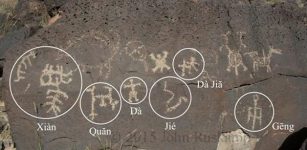 Controversial Evidence – Ancient Chinese Visited America 2,500 Years Ago
Civilizations | Mar 9, 2015
Controversial Evidence – Ancient Chinese Visited America 2,500 Years Ago
Civilizations | Mar 9, 2015 -
 Feared Skinwalker – Shapeshifter That Uses Mind Control To Hurt Victims In Native American Mythology
Featured Stories | May 16, 2019
Feared Skinwalker – Shapeshifter That Uses Mind Control To Hurt Victims In Native American Mythology
Featured Stories | May 16, 2019 -
 On This Day In History: Vädersol Painting Depicting ‘Sun Dog’ Phenomenon Observed Over Stockholm – On Apr 20, 1535
News | Apr 20, 2017
On This Day In History: Vädersol Painting Depicting ‘Sun Dog’ Phenomenon Observed Over Stockholm – On Apr 20, 1535
News | Apr 20, 2017 -
 Mysterious Ancient Underwater Structure Beneath MacDonald Lake Reveals Traces Of A Lost Civilization In Ontario
Civilizations | Nov 15, 2018
Mysterious Ancient Underwater Structure Beneath MacDonald Lake Reveals Traces Of A Lost Civilization In Ontario
Civilizations | Nov 15, 2018 -
 1,500-Year-Old Tunnel Tomb With Human Remains And Artifacts Accidentally Unearthed In Japan
Archaeology | Feb 23, 2018
1,500-Year-Old Tunnel Tomb With Human Remains And Artifacts Accidentally Unearthed In Japan
Archaeology | Feb 23, 2018 -
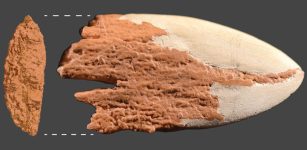 Evidence Oldest Bone Spear Point In The Americas Is 13,900 Years Old
Archaeology | Feb 3, 2023
Evidence Oldest Bone Spear Point In The Americas Is 13,900 Years Old
Archaeology | Feb 3, 2023 -
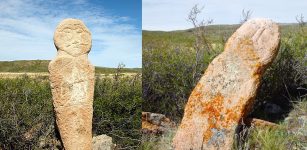 Balbals – Ancient Stone Guards Of The Kazakh Steppe
Artifacts | Dec 21, 2015
Balbals – Ancient Stone Guards Of The Kazakh Steppe
Artifacts | Dec 21, 2015 -
 Undiscovered Neanderthal Artifacts From The Ice Age Are Submerged Below The Waves Of The English Channel
Archaeology | Nov 23, 2022
Undiscovered Neanderthal Artifacts From The Ice Age Are Submerged Below The Waves Of The English Channel
Archaeology | Nov 23, 2022 -
 On This Day In History: Sir Francis Drake Sets Sail On His Round-The-World Voyage – On Dec 13, 1577
News | Dec 13, 2016
On This Day In History: Sir Francis Drake Sets Sail On His Round-The-World Voyage – On Dec 13, 1577
News | Dec 13, 2016



